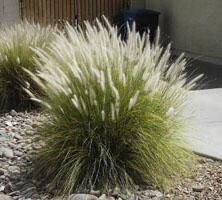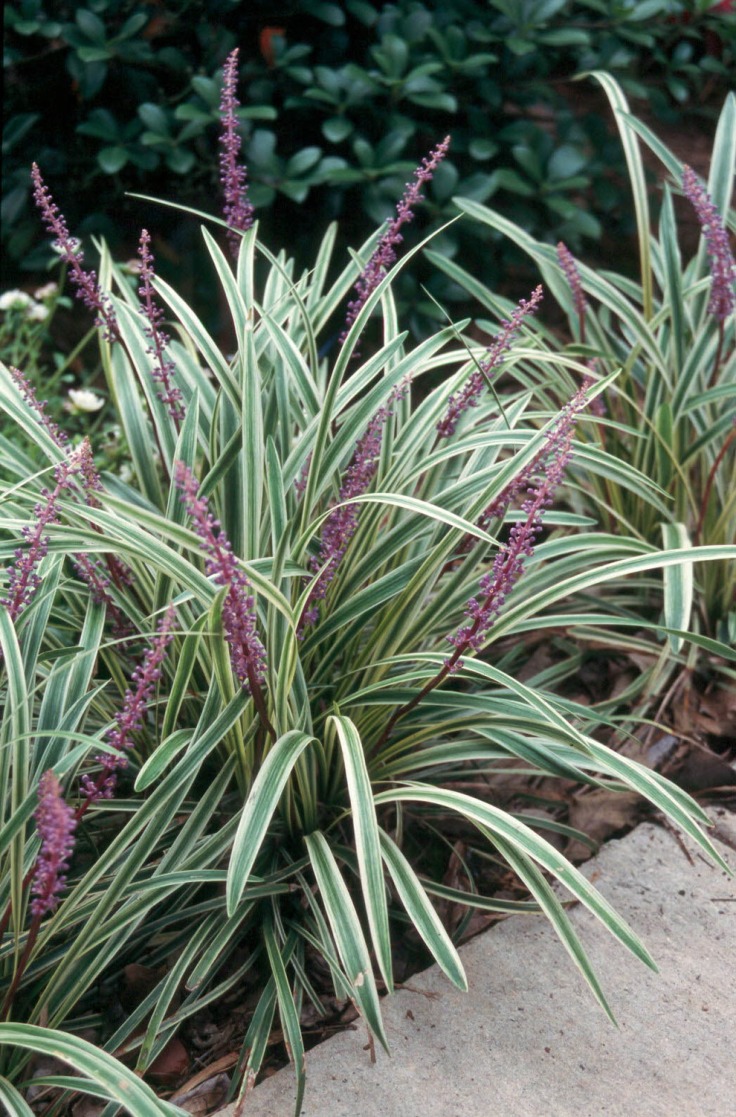This time, we’re going to talk about Fast Growing Grass For Deer Cover. There is a lot of information about Red Osier Dogwood For Deer on the internet, of course. Social media are getting better and better quickly, which makes it easier for us to learn new things.
Switchgrass Seed and Best Perennial Grass For Deer are also linked to information about What Ground Cover Do Deer Eat. As for other things that need to be looked up, they are about Fast Growing Deer Cover and have something to do with Fast Growing Deer Cover.

13 Tips to Fast Growing Grass For Deer Cover | Switchgrass Seed
- Early successional vegetation can be found in various habitat types, including grasslands, prairies, old fields, woodlands and forests. White-tailed deer use these areas for bedding and escape cover. These habitat types also provide important food sources for deer and other wildlife (Figure 1). - Source: Internet
- Disking is another practice used to set back plant succession (Figure 11). Disking, particularly when conducted in a field composed of a dense stand of grasses, can stimulate the germination of a variety of native forbs that are favored by deer. Increased forb cover provides greater amounts of forage for deer. Disking promotes the growth of such highly desirable plants as ragweed, partridge pea, asters, ticktrefoil, native lespedezas and sunflowers. - Source: Internet
- Ornamental grasses are a special type of plant that adds interest and texture to any garden. Unlike traditional grasses, which are usually used for lawns, ornamental grasses are prized for their showy flowers and interesting foliage. There are many different varieties of ornamental grasses, and each one has its own unique look. - Source: Internet
- I would suggest to you a Native Warm Season Grass (NWSG) mixture on the sloped area. There are many mixtures of different warm season grasses you can choose that will accomplish your goal. I have planted Big bluestem, Little bluestem and Indian grass in my mixtures and had some great success in providing safety cover. - Source: Internet
- In situations where burning is either not an option or is an option only during a very brief time, and disking is also not an option, mowing becomes an alternative. One recommendation is to mow early successional vegetation and advanced stages of growth in old field habitats in late winter (January to early March), just before spring green-up. This timing allows deer to use the existing cover through most of the winter and preserves fawning cover and succulent new growth of plants provided by these habitats in spring and summer. Do not mow these areas during the spring or summer. - Source: Internet
- As previously mentioned, mowing can set back plant succession, but mowing is the least desirable management practice for maintaining early successional vegetation and old field habitats (Figure 14). Frequent mowing tends to cause debris and thatch to accumulate at the ground layer, suppressing the germination of valuable native forbs and legumes that are in the seed bank. In addition, mowing during the growing season destroys fawning cover that deer require and nesting cover used by a variety of birds. - Source: Internet
- If undesirable cool-season grasses dominate the field, often the first step that needs to be taken is to remove these grasses by applying herbicides (Figure 13). In many cases, potentially good early successional habitat has been choked out by cool-season grasses such as tall fescue, orchard grass or smooth brome. Although these fields can be converted to better cover with well-timed prescribed fires, it can be a long, slow process. The selective use of herbicides can expedite the process by removing cool-season grasses to allow the growth of more beneficial native warm-season grasses and forbs. Once the field has been converted, prescribed fire and disking practices can be used to maintain this desired plant composition and habitat. - Source: Internet
- Scattered shrubs and small trees can make fields of native warm-season grasses and associated forbs more attractive to deer (Figure 6). Shrubs and small trees such as blackberry, sumac, sassafras, dogwoods, elderberry, wild plums, persimmon, hazelnut, witchhazel, hawthorn, American crabapple and wild cherry provide cover and important food for deer throughout the year (Figure 7). These shrubs can be important for wildlife, but they are often mowed before they can provide any benefits. - Source: Internet
- In most situations, prescribed burning is by far the single best management practice for creating and maintaining early successional plant communities. The use of a prescribed burn (also called a prescribed fire or a controlled burn or fire) involves the controlled application of fire in a predetermined area to remove plant litter, stimulate the germination of seeds, control undesirable woody vegetation and set back plant succession (Figures 8a and 8b). Prescribed fire can be used in grasslands, old field habitats and woodlands, during either the dormant winter months or the growing season, to accomplish a specific management objective. - Source: Internet
- Native warm-season grasses — specifically big and little bluestem, broomsedge, indiangrass, switchgrass and eastern gamagrass — are desirable in early successional habitats. These grasses are much preferred over nonnative cool-season grasses, such as tall fescue, because they provide the vegetative structure for improved fawning and winter cover (Figures 4 and 5). However, these grasses should not be allowed to get rank, as that would limit their diversity and early succession value. - Source: Internet
- Disking can be done at various times of the year, from late fall to early spring. The seasonal timing will influence the vegetative structure and composition of the plant community. Disking during the fall often increases the growth of forbs and legumes within stands of grass, whereas early spring disking tends to promote the growth of annual grasses such as foxtails and millets. The optimal time to conduct strip disking in Missouri is from late October to early March. Delaying until early spring enables cover to stand through the winter and promotes the growth of favorable forbs. - Source: Internet
- For controlling perennial cool-season grasses, such as tall fescue, prepare the field for herbicide application by either conducting a prescribed fire or haying during August or early September. After either practice, the undesirable cool-season grasses will put on a new flush of growth. Allow the grasses to grow to about 6 inches tall, and then treat them with a glyphosate herbicide. Conducting this practice during the fall rather than the spring is recommended as fall applications improve control and do not typically harm desirable native warm-season grasses and forbs. - Source: Internet
- If you’re looking for a way to keep deer away from your garden, consider planting some deer-resistant ornamental grasses. There are many different types of grasses that fall into this category, and each has its own unique set of characteristics. In this blog post, we will take a look at five different deer-resistant grasses and discuss why they are effective at deterring deer. We will also provide tips on how to grow these plants successfully in your garden! - Source: Internet
 Here are a few tips to help you find information about Hunting Deer In Thick Cover:
- Look for good places to get information about CONCEAL. This can be done in libraries, on websites, or even by paid journalists.
- When looking for information about Red Osier Dogwood For Deer, it's important to know that there are different kinds of online sources, like Google and YouTube. Social media sites like Facebook and Twitter are also good places to look for information about Enhancing White-Tailed Deer Habitats on Your Property: Early Successional Vegetation.
Here are a few tips to help you find information about Hunting Deer In Thick Cover:
- Look for good places to get information about CONCEAL. This can be done in libraries, on websites, or even by paid journalists.
- When looking for information about Red Osier Dogwood For Deer, it's important to know that there are different kinds of online sources, like Google and YouTube. Social media sites like Facebook and Twitter are also good places to look for information about Enhancing White-Tailed Deer Habitats on Your Property: Early Successional Vegetation.Video | Fast Growing Grass For Deer Cover
To get the best information about What Makes A Good Deer Bedding Area, you should read to find out how true each source is.
This article has a few videos from different places about Hunting Deer In Thick Cover that will help you learn more about it. The Internet is a great place to find out about a wide range of things.
## Here are some crucial points concerning What Makes A Good Deer Bedding Area:- Fast Growing Grass For Deer Cover
- Fast Growing Deer Cover
- What Makes A Good Deer Bedding Area
- Best Perennial Grass For Deer
- Hunting Deer In Thick Cover
:max_bytes(150000):strip_icc()/Grasses-GettyImages-490434416-5a7b04676edd650036acc2e8.jpg)
With so many websites and forums that talk about September 2022 Plant of the Month: Deer Grass, it shouldn’t be hard to find what you need.
Most people are used to getting information about How To Create A Deer Thicket in a very different way than this. It lets you look at the information about September 2022 Plant of the Month: Deer Grass and how it can be used in more detail.
 ways to put information about Red Osier Dogwood For Deer in a way that looks good and is useful. They can be used in business and marketing, and they can also be used to talk about Best Perennial Grass For Deer. So, we also give you some pictures about Red Osier Dogwood For Deer.
ways to put information about Red Osier Dogwood For Deer in a way that looks good and is useful. They can be used in business and marketing, and they can also be used to talk about Best Perennial Grass For Deer. So, we also give you some pictures about Red Osier Dogwood For Deer.
In the end, this article gives a summary of What Ground Cover Do Deer Eat. Also talked about are fast growing grass for deer cover and Enhancing White-Tailed Deer Habitats on Your Property: Early Successional Vegetation, which you can use to compare how much you know about Red Osier Dogwood For Deer.